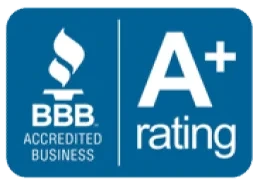What to Do If Your Roof Is Leaking: A Step-by-Step Guide
A leaky roof is one of the most stressful problems homeowners can face. Whether it’s caused by storm damage, wear and tear, or faulty materials, a leak can quickly escalate into costly water damage if not addressed promptly. If you find yourself dealing with a leaky roof, don’t panic. Here’s a step-by-step guide on what to do if your roof is leaking to help you mitigate the damage and ensure your home stays protected.
1. Contain the Water
The first thing you should do when you notice a leak is to contain the water. This prevents further damage to your walls, ceilings, and floors. Place a bucket, trash can, or any large container under the leak to catch the water. If water is splashing onto the floor, you can place a towel or old t-shirt in the bottom of the container to soften the splash.
Pro Tip:
If the water is causing a bulge in your ceiling, use a screwdriver or sharp object to puncture the bulge and release the water. While this may seem counterintuitive, it prevents water from spreading and causing further ceiling damage.
2. Protect Your Belongings
Move any valuable items, furniture, or electronics out of the way to protect them from water damage. If moving them isn’t possible, cover them with plastic sheeting, tarps, or waterproof materials until the leak is fixed.
Pro Tip:
If the leak occurs near wiring or electrical outlets, shut off power to the area to avoid electrical hazards.
3. Locate the Source of the Leak
Once the immediate water is contained, your next step is to locate the source of the leak. Start by checking the attic if you have one. Look for signs of moisture, mold, or stains around beams and insulation. Follow the water trail upwards to the potential entry point on the roof.
Common causes of leaks include:
Skylights or vents that aren’t properly sealed
Damaged or missing shingles
Cracked flashing
Clogged gutters
Ice dams (in colder climates)
Pro Tip:
Sometimes, the source of the leak is not directly above the spot where water is dripping inside. Water can travel along beams and other structures before finding an outlet, so thorough inspection is essential.
4. Apply Temporary Fixes
If you’ve identified the leak source and it’s safe to do so, apply temporary fixes to reduce water intrusion until a professional can provide a permanent solution. Here are a few methods:
- Use roofing tape or caulk: Apply waterproof roofing tape or caulk to small cracks or gaps around flashing, shingles, or vent pipes.
- Cover with a tarp: For larger issues, cover the damaged area of the roof with a heavy-duty tarp. Secure it tightly with nails or bricks to prevent further water from entering your home.
Pro Tip:
If the damage is extensive or you’re uncomfortable making temporary repairs, avoid getting on the roof yourself, especially during bad weather. It’s safer to call in a roofing professional to handle the issue.
5. Document the Damage
Take photos and document the leak, both inside and outside of your home. This documentation can be vital for insurance claims, especially if the damage is related to a storm or other covered event.
Make sure to:
- Photograph the roof from the ground if possible.
- Take detailed pictures of the water damage inside your home.
- Keep any receipts for emergency supplies or temporary repairs.
Pro Tip:
Contact your homeowner’s insurance provider as soon as possible to determine if roof repairs or replacements are covered under your policy. The documentation will help speed up the claims process.
6. Call a Roofing Professional
Once you’ve controlled the situation, it’s time to call in the experts. A licensed roofing contractor will assess the damage, pinpoint the cause, and provide you with options for repair. Addressing the issue promptly with professional help is the best way to prevent small leaks from becoming large, expensive problems.
Pro Tip:
At Absolute Home Solutions, we offer emergency roof repair services and free inspections to help homeowners tackle leaks before they get out of control. Our experienced team will provide honest recommendations and quality repairs that last.
7. Prevent Future Leaks
After your roof has been repaired, it’s important to take steps to prevent future leaks. Routine maintenance and inspections are key to catching small problems before they turn into major issues. Here are a few preventative tips:
- Regular inspections: Have your roof inspected annually and after major storms.
- Clear gutters and downspouts: Keep gutters free of leaves and debris to ensure proper drainage and prevent water backup.
- Trim overhanging branches: Tree limbs that touch or hang over your roof can cause damage during storms.
- Replace aging shingles: If your roof is older, consider replacing shingles that are curling, cracking, or missing altogether.
Pro Tip:
Maintaining proper attic ventilation and insulation can also help reduce the risk of leaks caused by condensation or ice dams in the winter.
Final Thoughts
A leaking roof can feel like a nightmare, but taking swift action can help minimize damage and make the repair process smoother. By containing the water, protecting your belongings, and contacting a professional for help, you can ensure your home stays safe and dry.
At Absolute Home Solutions, we specialize in diagnosing and fixing roof leaks quickly and effectively. Whether you need a small repair or a full roof replacement, our team is here to help. Contact us today for expert advice!







